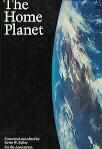| Maybe it's not fair that I'm reviewing a book I haven't read
or thought much about in 4 years, but it has stuck with me and now
that I have it on loan from the
Seattle Public Library and
have read the first paragraph ("...He [Mailer likes referring to himself
in the third-person] was sick in that miasmal and not quite discoverable
region between the liver and the soul. Hemingway's suicide left him wedded
to horror. It is possible that in the eight years since, he never had a day
which was completely free of thoughts of death."), the sweep and strength
of Norman Mailer's
OF
A FIRE ON THE MOON comes rushing back to me with the same shudder
of excitement as when a 36-storey Saturn V rocket lifts ponderously
from the launchpad, a skyscraper attempting flight, Henry
Miller's lead-with-wings erection erupting across the cape.
 Famed egotist Mailer covered the Apollo 11 first-manned-moonlanding beat
journalist-wise for a few tawdry weeks in July of 1969, moving from
Mission Control in Houston to equally broiling swamps of Cape Canaveral,
filtering the scene through x-ray eyes immune to the prevailing jingoist
hype. The things he notices are peculiar but somehow salient: 15 of the 16
Apollo astronauts had blue eyes; Buzz Aldrin gave himself Holy Communion
on the moon; cocktail party quotes from Von Braun and other ex-Nazi rocket
scientists who made America's flag-planting on the moon the "triumph for
democracy" it was.
Famed egotist Mailer covered the Apollo 11 first-manned-moonlanding beat
journalist-wise for a few tawdry weeks in July of 1969, moving from
Mission Control in Houston to equally broiling swamps of Cape Canaveral,
filtering the scene through x-ray eyes immune to the prevailing jingoist
hype. The things he notices are peculiar but somehow salient: 15 of the 16
Apollo astronauts had blue eyes; Buzz Aldrin gave himself Holy Communion
on the moon; cocktail party quotes from Von Braun and other ex-Nazi rocket
scientists who made America's flag-planting on the moon the "triumph for
democracy" it was.
Most of the moonshot facts
in my story "Vegetable Dreams"
were culled from these pages (supplemented by the BBC broadcasts
available on
Apollo
11 Moon Landing). The facts in themselves are breathtaking--almost
literally, as when Mailer notes the Saturn V rocket burned every second the
oxygen equivalent of half the global population's taking a breath--and both
material description and political dissection are written with greater vigor
and insight than Wolfe's
THE
RIGHT STUFF, although the latter is useful as an introduction
to why the wasteful expedient of manned rockets (and incidental creation
of single-combat warrior class of astronauts) was chosen over continuing
aggressive development of piloted space planes.
To anyone who's ever looked at the moon and wondered what it would be like
to travel there, read this lost treasure and you'll know at least what
it was like--and all it demanded--to be first.
There's No Place Like It.
 Let's
not forget we're living on a little planet, what some like to call spaceship
earth. If earth is a spaceship, this is the owner's manual:
THE
HOME PLANET. Political boundaries are dissolved by a moon's-eye
view of Earth to create bold visions of the planet through 150 color photographs
culled from the American and then-Soviet archives. Commentary is provided
solely by eloquent quotes from astronauts of 18 nations which are shown both
in original language (be it Arabic, Chinese, Vietnamese, Hindi, Mongolian,
French, German, Spanish, Hungarian, Romanian, Polish, Czech, Bulgarian, Dutch,
or Russian) and English translation. The message is simple--we are all citizens
of the same global nation. Let's
not forget we're living on a little planet, what some like to call spaceship
earth. If earth is a spaceship, this is the owner's manual:
THE
HOME PLANET. Political boundaries are dissolved by a moon's-eye
view of Earth to create bold visions of the planet through 150 color photographs
culled from the American and then-Soviet archives. Commentary is provided
solely by eloquent quotes from astronauts of 18 nations which are shown both
in original language (be it Arabic, Chinese, Vietnamese, Hindi, Mongolian,
French, German, Spanish, Hungarian, Romanian, Polish, Czech, Bulgarian, Dutch,
or Russian) and English translation. The message is simple--we are all citizens
of the same global nation. |
|
|
